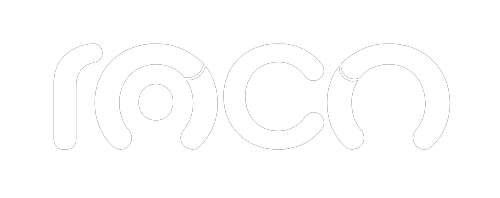Maslow's pyramid is a psychological theory that has transcended generations and disciplines. Although it originated in the field of psychology, it now has a strong presence in digital marketing, user experience (UX) design, content creation, and SEO strategies. But beyond the common references, do you really know what Maslow's pyramid is and how it can help you better understand your users in the digital environment?
In this article by At Agencia Roco We will thoroughly explore its structure, its practical applications, and how it can become a strategic tool for creating more empathetic, effective, and human-centered digital campaigns.
What is Maslow's Pyramid?
Maslow's pyramid is a theory of human motivation formulated by Abraham Maslow in 1943. This theory proposes that people act according to a hierarchy of needs, which must be progressively satisfied from the most basic to the most elevated.
Maslow grouped these needs into five levels:
- Physiological needs: Food, water, air, rest.
- Security needs: Protection, health, financial and emotional stability.
- Social needs: Affection, belonging, relationships and community.
- Esteem needs: Recognition, achievement, status, trust.
- Self-realization: Personal development, transcendent goals, creativity, purpose.
This pyramid is visually represented as a staircase, where each step requires attention to ascend to the next. In the digital context, this structure allows us to understand what motivates a user when interacting with a brand, content, or online experience, and adapt our strategies to better connect with them.
Why is Maslow's Pyramid Still Valid in the Digital Environment?
Understanding Maslow's pyramid helps us humanize our digital actions. Far from being an obsolete theory, it's now used to design messages, products, and experiences aligned with the values and priorities of today's consumers.
- Allows you to segment your audience based on empathy., not only from demographic variables.
- Facilitates the creation of relevant content, adapted to the user's level of awareness and needs.
- Optimize digital campaigns, by connecting emotionally with the moment that each person is experiencing.
In a world saturated with information, brands that understand what their audience really needs (beyond the product) are the ones that generate the greatest impact, loyalty, and conversion.
Applications of Maslow's Pyramid in Digital Marketing
1. Emotional and strategic segmentation
One of the greatest contributions of this theory to digital marketing is that it allows us to segment audiences beyond age, gender, or location. We can create profiles based on their psychological needs and tailor messages, channels, and offers more precisely.
Example:
- A user seeking job security may be more likely to be confident and respond better to content that inspires trust.
- Another person seeking advanced training is self-realization, and may be interested in premium courses or exclusive communities.
2. Design of experiences (UX) aligned with human needs
Web design, navigation, and digital interaction can also benefit from applying Maslow's pyramid:
- Does your website cover the user's basic needs (speed, quick access, clarity)?
- Does it generate trust and security so that you feel comfortable interacting?
- Does it foster a sense of community or belonging around your brand?
Applying these principles can significantly improve conversion rates, retention, and user satisfaction.
3. Writing content aligned with each level
Each type of content can be designed based on a different level of the pyramid:
| Maslow's level | Suggested content type |
|---|---|
| Physiological | Basic guides, essential products, immediate benefits |
| Security | Testimonials, warranties, legal content, comparative analysis |
| Social | Community, human stories, social networks, interactions |
| Esteem | Success stories, recognitions, impact metrics |
| Self-realization | Courses, mentoring, aspirational or educational content |
Want to better understand how to apply Maslow's pyramid to your strategies? We invite you to read our article: “What is Maslow’s Pyramid for?” and discover its practical usefulness in the digital environment and beyond.
Applications in SEO Campaigns and Strategies
Now that you know what Maslow's pyramid is, you can also integrate it into your organic positioning strategy. Let's see how.
Content for basic searches (level 1)
At this stage, the user is looking for concrete and practical information. Content such as "what is it," "how it works," or "benefits of" are ideal. Make sure to answer clearly and use keywords informative, such as What is Maslow's pyramid?, to capture initial traffic.
Content that conveys security (level 2)
Here, it's vital to use comparison, analysis, or guarantee keywords. Publish testimonials, case studies, clear work processes, or satisfaction policies.
Content that connects with the emotional (level 3 and 4)
Searches related to experiences, real-life cases, community, or social impact are signs that the user is seeking emotional connection or external validation. Respond with storytelling, interviews, and participatory campaigns.
Content aimed at personal development (level 5)
Users at this level often seek training, challenges, and inspiration. Create educational content, free courses, challenges, or downloadable materials that enhance their personal or professional growth.
What is Maslow's pyramid in digital marketing?
Understanding Maslow's pyramid allows you to design more human, relevant, and effective strategies. Instead of thinking only in terms of data or clicks, you begin to see the people behind the metrics: their emotions, aspirations, and needs.
Applying Maslow's pyramid to digital marketing, SEO, UX, and content allows you to build brands that are more empathetic and connected to their audiences. At Agencia Roco, we use this approach to design strategies based on human behavior, generating measurable and sustainable results. Ready to take your digital strategy to the next level? Contact us!









